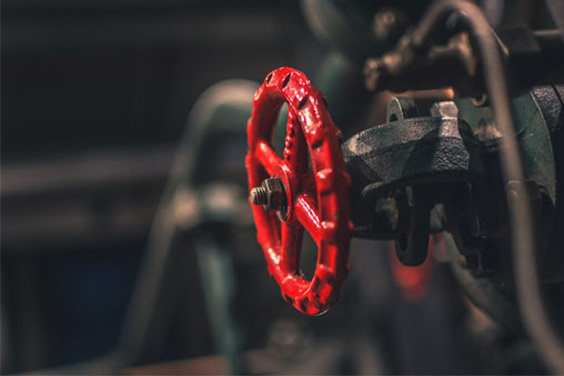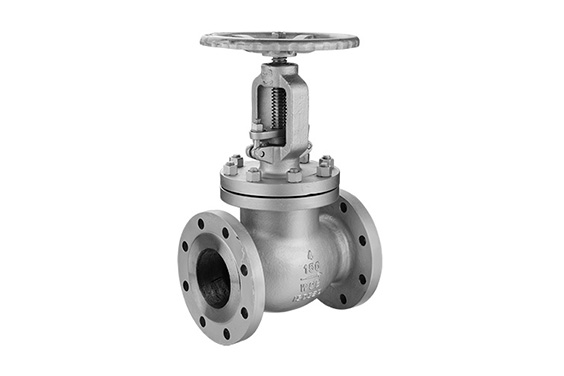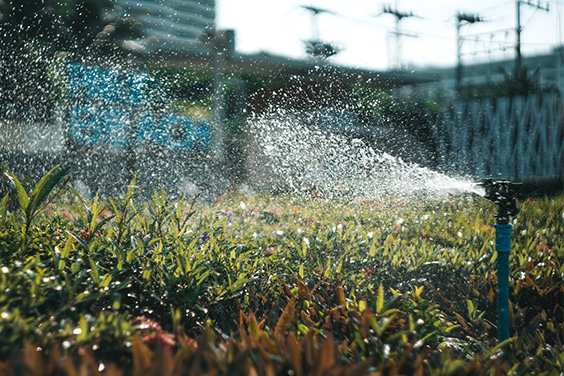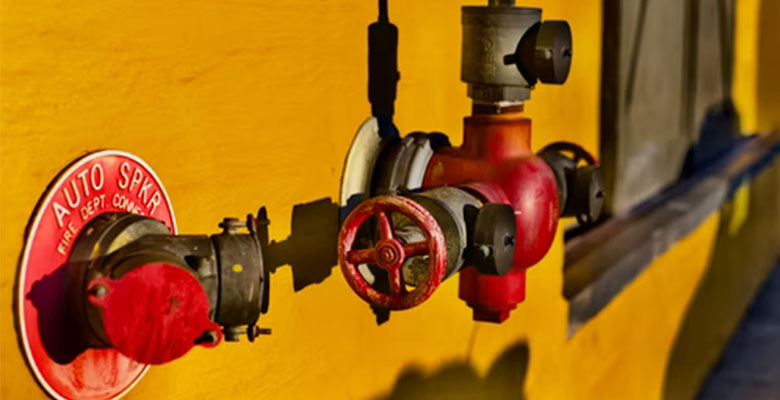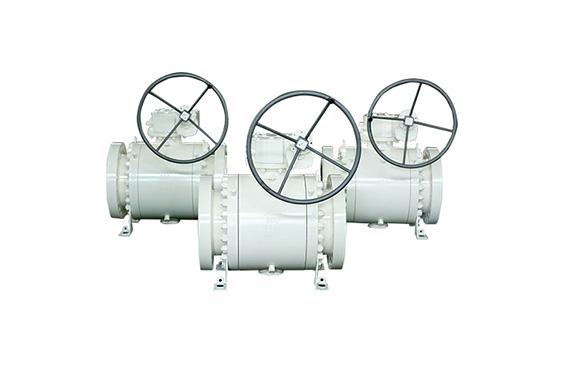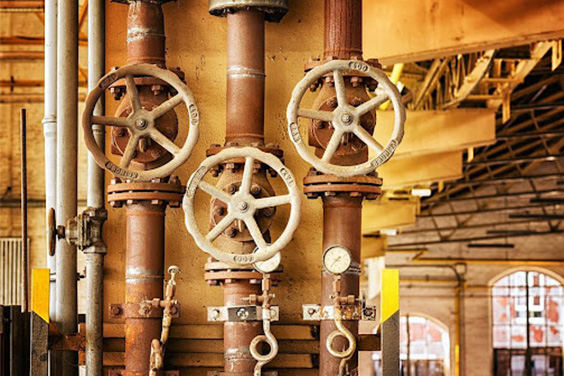A ball valve is a type of valve that controls hydraulic flow by using a rotating ball with perforations to stop and start the flow. To open and close, a ball valve is typically rotated 90 degrees around its axis. One of the most popular valve kinds is this one. Both liquid and gas services are suitable for ball valves.
They are well-liked in the petrochemical, chemical, and oil and gas industries due to their long lifespan and consistent sealing over the course of that lifespan. Even cryogenic and vacuum applications can make use of ball valves. Ball valves were created in about 1936 and are among the most affordable valves with a very broad size range.
There are different types of ball valves in superior ball valve manufacturers. In this article, we will be discussing everything about ball valves and their types.
What Is Ball Valve
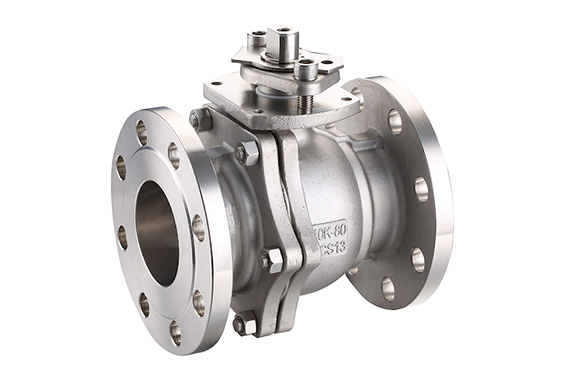
Ball valves are mechanical devices that control, guide, direct, and modulate the flow of various substances such as gas, pressure, liquids, and so on. There are several ball valve types with varying designs for specialized applications, but the basic ball valve parts are the same.
Different ball valves can be classed based on several characteristics such as:
- Number of Ports: The number of ports on a ball valve allows it to be easily classified. A normal ball valve has two ports (1 inlet and 1 outlet). A 3-way port with 1 inlet and 2 outlets, or 2 inlets and 1 outlet, has also been designed.
- Design options include floating and trunnion-mounted versions.
- Seat Type: Teflon, Metal
- Body Assembly: unibody, two pieces, or three pieces.
- Ball Access: Side entry, or top entry
- Bore Size: Full bore, reduced bore, V-notch
A ball valve is a type of valve that controls hydraulic flow by using a rotating ball with perforations to stop and start the flow. To open and close, a ball valve is typically rotated 90 degrees around its axis. One of the most popular valve kinds is this one. Both liquid and gas services are suitable for ball valves.
They are well-liked in the petrochemical, chemical, and oil and gas industries due to their long lifespan and consistent sealing over the course of that lifespan. Ball valves can even be employed in cryogenic and vacuum applications. Ball valves, which were created in about 1936, are among the most affordable valves and come in a huge variety of sizes.
Due to their affordability, ball valves are occasionally used as control valves, although they are not favored because they don’t offer accurate control and changes.
A vent is drilled into the upstream side of the valve in the event that a ball valve is utilized for cryogenics or a product that could expand inside the ball. This object is known as a vented ball.
A “ball-check valve,” a type of check valve that employs a solid ball to stop unwanted backflow, should not be confused with a ball valve. The butterfly valve, plug valve, and freeze-proof ball valve are other varieties of quarter-turn valves.
What Are the Ball Valves Types
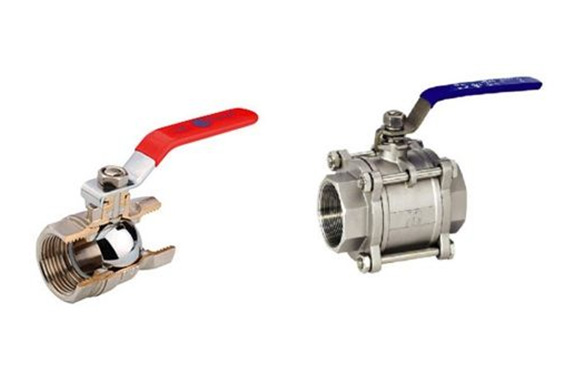
There are main 12 basic types of ball valves:
1. Full Port Ball Valve
2. Standard Port Ball Valve
3. V-Port Ball Valve
4. Multi-Port Ball Valve
5. Reduced-Port Ball Valve
6. Trunnion Mounted ball valve
7. Manually Operated Ball Valve
8. Electric Actuated Ball Valve
9. Pneumatic Ball Valve
10. Hydraulic Ball Valve
11. 3 way ball valve
12. Double Block & Bleed ball valve
The kind of ball valve needed depends on the application. One can select the appropriate one by taking into account many criteria such as pressure, size, temperature, number of ports, body materials, end connectors, and configurations.
1. Full Port Ball Valve
The cost of a full port or full bore ball valve is higher than that of other varieties. Because the hole in this ball valve is the same size as the pipeline, the bigger ball in the full port ball valve reduces friction loss. Despite the greater valve size, the flow is unrestrained in full port ball valve size. Full bore ball valves are commonly utilized for throttling applications in a variety of systems that have high flow coefficients and low-pressure drops.
This ball valve type has an enlarged ball. The valve is larger, yet the flow is not restricted.
2. Standard Port Ball Valve
The standard port ball valve has a smaller port and ball than the previous ball valve type. Due to the pipe size, it is less expensive but has a little reduced flow. Despite being less expensive, they have greater pressure dips than other kinds of ball valves. Similar to full port valves, standard port valves are excellent for systems with large flow coefficients.
Although it is typically less expensive, a standard port ball valve has a smaller ball and a smaller port. This valve has a flow restriction since the flow is one pipe size smaller than the valve’s pipe size. Ball valves with decreased ports restrict flow by one pipe size because the flow through the valve is smaller than the pipe size of the valve.
3. V-Port Ball Valve
Either the seat shape or the ball shape is represented by the V in the v-port ball valve. You can better manage the opening and closing with a V ball valve. This type’s flow characteristic is nearly linear. Since these kinds of fluids quickly harm a regular valve, the high velocities of the fluids employed with such ball valves forced the designers to come up with generally more durable construction for them.
The little end of the “v” is opened first when the valve is in the closed position and the opening is started, giving steady flow control at this point. The increased fluid velocities in this type of design necessitate a generally more robust construction because a regular valve would be quickly damaged.
4. Multi-Port Ball Valve
Ball valves with many ports often have three or four ways and a central hole with an L to T form. Any pair of ports can be connected using T valves, and side ports can be connected to the center port using an L valve. A multi-port ball valve’s inlet is typically orthogonal to the outlets’ plane. 4-way ball valves have two X ports, which are L-shaped openings in the ball.
5. Reduced-Port Ball Valve
The flow area through the valve is less than the pipe and the flow through the valve is one pipe size less than the pipe size of the valve. These valves are sometimes referred to as RB, reduced-port ball valves, or reduced bore. The pipeline has a pressure loss while using this kind of ball valve.
6. Trunnion Mounted ball valve
Trunnion mounted ball valves have a pin that holds the ball in place and prevents it from moving. A segmented ball can be supported by the valve and the system can reduce friction between various components of the genuine union valve thanks to two shafts at the opposing ball valve threaded type ends of the ball in the Trunnion.
True union ball valves unlike ball valve floating type offer advantages for systems with high velocity since they can withstand greater pressure than a regular ball valve. If necessary, they can also be taken out of the piping system. This design is typically used on larger, higher pressure valves since it includes a mechanical mechanism for securing the ball at the top and bottom.
7. Manually Operated Ball Valve
Ball valves that are manually actuated are simple in design and simple to use. In this style, the valve opens and closes by turning it a quarter turn. The drawback is that this fast operation can put users at risk of water hammers. Ball valves that are manually operated can close quickly, which increases the risk of water hammer.
Some ball valves come with an actuator that can be powered by an electric or pneumatic motor. These valves can be utilized for flow control or on/off functionality. A positioner is another component of a pneumatic flow control valve that converts the control signal into the appropriate actuator position and valve opening.
Electric actuators employ an electric motor to rotate a ball valve through 90 degrees, converting electrical energy into rotary force. They are a silent, clean, and energy-efficient technique for controlling valves. Direct current (DC) or alternating current (AC) can both power the electric motor (DC).
It is contained in a sturdy, small housing along with other actuator parts including gearings, limit switches, wiring, etc. By use of an appropriate connection interface, such as the ISO 5211 standard, the entire assembly is connected to a valve.
8. Electric Actuated Ball Valve
In electric actuated ball valves, Electric actuators employ an electric motor to rotate a ball valve through 90 degrees, converting electrical energy into rotary force. They are a silent, clean, and energy-efficient technique for controlling valves. Direct current (DC) or alternating current (AC) can both power the electric motor (DC).
It is contained in a sturdy, small housing along with other actuator parts including gearings, limit switches, wiring, etc. By use of an appropriate connection interface, such as the ISO 5211 standard, the entire assembly is connected to a valve.
9. Pneumatic Ball Valve
Pneumatic ball valves are controlled by pneumatic actuators, which use compressed air energy to generate mechanical motion. A ball valve needs to rotate mechanically in order to turn 90 degrees.
Ball valves with pneumatic actuators can be single- or double-acting. A single compressed air input turns the valve into a single-acting pneumatic actuator, and a spring resets the valve to its initial position. Two compressed air inputs are used by a double-acting pneumatic actuator to turn the valve and put it back in its initial position.
10. Hydraulic Ball Valve
In order to manage the fluid in hydraulic systems, hydraulic ball valves are often a type of special stainless steel ball valves or carbon steel ball valves. The full bore ball valve has virtually minimal flow resistance due to its low fluid resistance.
Hydraulic ball valves are sometimes known as high-pressure ball valves because they have a maximum working pressure of 7500 psi (500 bar), depending on the size and connection type. This ball valve type is in Square shape, which makes them distinct from other types of ball valves like Piece Ball Valves, Two Piece Ball Valves, Three Piece Ball Valves, Fully Welded Ball Valves, and so on.
11. 3-Way Ball Valve
A three-way ball valve has three ports, which are also referred to as apertures. A metal ball with holes to adjust the media flow direction connects the ports. There is a mechanism to turn the ball, which directs flow from one place to another, as media (fluid or gas) passes through the valve. The most popular variety of multi-port ball valves is the 3-way valve.
Depending on the flow direction, the ports are typically stated as having two outlet ports and one inlet port, or vice versa. Fluid or gas will enter through several sources and, depending on the shape of the valve, will either mix or be cut off from one another.
The ball inside the valve’s body is rotated by moving a handle (for mechanical valves) or turning an actuator (for electric ball valves). To direct flow, the channels are rotated into alignment with the valve’s inlets and outlets.
12. Double Block and Bleed Ball Valve
Double block and bleed valves are useful in many different industries, but they are most frequently employed in the oil and gas sector. It is frequently employed when the valve cavity needs to be bled when piping needs to be isolated for repair, or in any of the following situations: Keep your products clean.
It’s like having three valves in one when using a double block and bleed valve. Described as a “single valve with two seating surfaces that, when closed, creates a seal against pressure from both ends of the valve with a means of venting/bleeding the space between the seating surfaces,” a double block and bleed valve has two seating surfaces.
These ball valves have a pin that holds the ball in place and prevents it from moving. A segmented ball can be supported by the valve and the system can reduce friction between various components of the genuine union valve thanks to two shafts at the opposing ball valve threaded type ends of the ball in the Trunnion.
These ball valves unlike ball valve floating type offer advantages for systems with high velocity since they can withstand greater pressure than a regular ball valve. If necessary, they can also be taken out of the piping system. This design is typically used on larger, higher pressure valves since it includes a mechanical mechanism for securing the ball at the top and bottom.
Ball Valve Materials
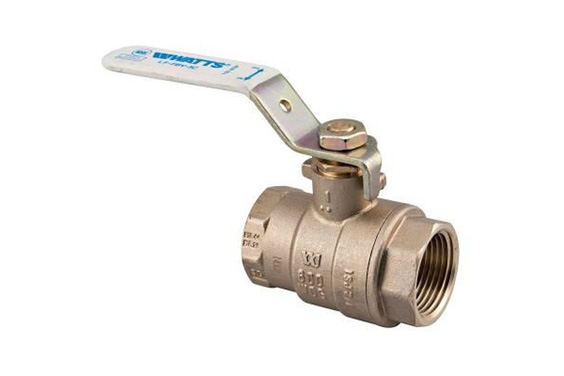
1. PVC
Polyvinyl chloride, generally known as PVC, is a type of plastic that is utilized in the creation of ball valves. Their flexibility and smoothness, which facilitate easier movements for ball valve parts, are one of their advantages.
2. Bronze and Brass
Ball valves used in systems with low or medium pressure are best made of bronze or brass. Additionally, these materials are resistant to corrosion and water.
3. Stainless Steel
Since stainless steel has many advantageous qualities, including durability and corrosion resistance, it is one of the key materials used in the design of many ball valve types. Stainless steel ball valves can be utilized in both general plant systems and geochemical systems.
4. CPCV
Chlorinated PVC, often known as CPVC, is identical to PVC but can withstand greater temperatures. Ball valves that handle hot water can be made of this material.
5. Iron
Even though iron is less flexible than PVC, it nevertheless has a purpose in the production of ball valves. Iron is used frequently to make ball valves because it can tolerate a wide variety of pressures and temperatures.
Keep in mind that each of these ball valve types has specific benefits and drawbacks and that the best option will depend on your application and the location where you intend to utilize the ball valve.
Ball Valve Applications

The applications of ball valves include:
- Ball valves are used in refineries for a variety of applications, including shut-off and isolation valves for tower bottom lines and thermal-cracking units, gas/oil separation lines, gas distribution measuring, metering, and pressure regulation stations, oil loading control stations, pumping and compressor stations, emergency shut-down loops, refining units, etc.
- Ball valves are used in chemical and petrochemical complexes for a variety of purposes, including controlling low differential pressure, reducing emissions, and handling highly viscous fluids and abrasive slurries in storage and processing areas.
- Applications for ball valves in the power sector include controlling boiler feedwater, acting as burner trip valves, controlling and shutting off steam, etc.
- In subsea isolation and shutdown facilities, for oil-head isolation, pipeline surge control, processing separation, storage, transmission, and distribution, secondary, and to improve oil recovery, ball valves are used in the gas and oil production industries.
- Ball valves are used in the pulp and paper industry for a variety of purposes, including shut-off valves, batch digesters, liquor fill and circulation, flow control for lime mud, control for diluting water, and more.
Ball Valve Working
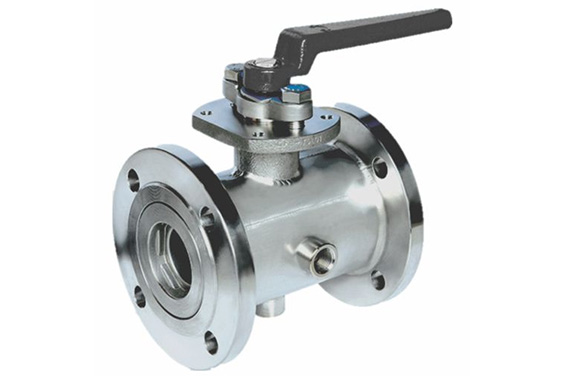
Rotating motion valves include ball valves. The attached ball rotates when the stem transmits the motion to it. The ball valve seats lie on top of and support this ball of a ball valve. The bore can open or close to facilitate the fluid flow or halt thanks to the rotation of the ball over the valve seats.
When the ball’s port opening lines up with the valve’s inlet and outlet ports, flow through the valve is continuous and only experiences a little pressure decrease if a full-port ball is employed. It goes without saying that using a reduced-port ball results in a greater pressure drop.
The flow passageways of the ball and the body are lined up when the hand operator is positioned parallel to the pipeline, permitting complete flow through the closing device. The ball’s opening starts to move perpendicular to the flow stream as the hand operator is rotated to the closed position, and the port edges start rotating through the seat.
The port totally perpendicular to the flow stream and blocked when the full quarter-turn is reached. The flow undergoes a double pressure drop via the valve in throttling applications while the ball is in a midturn position, much like a plug valve.
When a characterizable ball is used to deliver a particular flow to a position, when the ball rotates from closed to open through the seat, a certain amount of the port opening is exposed to the flow at a particular position, until 100 percent flow is obtained at the full-open position.
The ball valve operates in a quarter-turn motion, with 0° denoting full closure and 90° denoting full opening, as with all rotary-action valves. A linear actuator design with a transfer case can convert linear motion to rotational action, or the actuator can be constructed to provide this circular motion, as is the case with a manual hand lever.
A full-port valve has less pressure loss and recovery when the flow passes through it when it is fully open. This is due to the fact that the flow passageway is essentially the same diameter as the inside diameter of the pipe and that there are no obstructions to the flow other than slight geometrical deviations at the orifices.
Full-port valve throttling should be thought of as a two-stage pressure decrease procedure. Full-port valves have two orifices, one on the upstream side and the other on the downstream side, due to the length of the bore through the ball.
The flow passes through the first restricted orifice as the valve advances to the mid-stroke position, causing a pressure drop, and then moves into the bigger flow bore inside the ball, where the pressure partially recovers. The flow then shifts to the second orifice, when a second pressure decrease and subsequent pressure recovery take place.
Lower process velocities are produced by the dual pressure drops in this two-step procedure, which is advantageous for slurry applications. A full-port valve’s flow rate is controlled by the ball’s hole’s diminishing flow area as the valve rotates in a quarter-turn motion, giving the valve an inherent equal-percentage feature and a truly circular opening.
The sliding motion of the ball against the seal produces a shearing action like a pair of scissors as the area of the flow route decreases as the valve nears closing. For slurries, where long-entrained fibers or particles can be sheared off and separated at closing, this action is suitable.
The entire face of the ball is totally exposed to the flow when the flow hole is fully closed, as it is now perpendicular to the flow, preventing it from continuing past the ball.
Only one pressure drop is taken through the valve at the orifice where the seal and ball come into touch with each other in the segmented-ball design. The flow is restricted by the geometry of the flow route when the segmented ball is fully open. In essence, this improves throttling because a pressure decrease is taken by flow area reduction.
The flow characteristic is provided by the changing shape of the V-notch or parabolic port as the segmented ball advances through the quarter-turn motion. The sliding seal of the distinguishable ball, like the full-port design, produces a shearing motion for efficiently separating slurries.
Conclusion
This was all about ball valves their types and floating ball valve types. If you are looking for a industrial valve factory to fulfill your business requirements, contact SIO Valves right away and place your order now.

